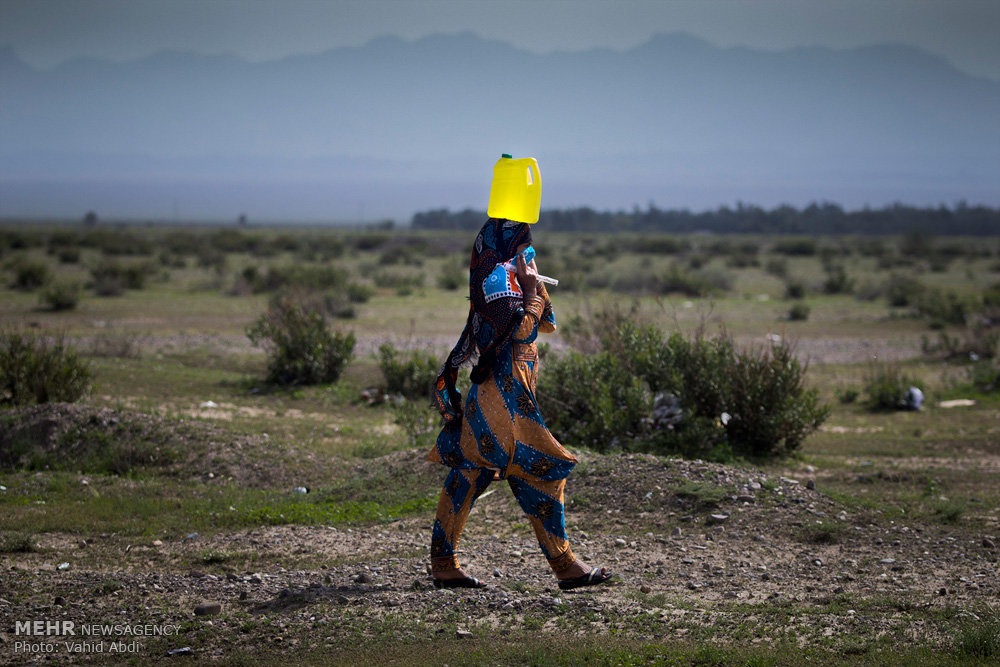Things are changing: "Wet gets wetter, dry gets drier"

This is not new, our country is situated in an arid and semi-arid area, and we all know what it means: Iran is not normally defined as a wet country.
And unfortunately despite what some people in the other part of the world might call “hoax”, climate change is actually plaguing us here in Iran.
According to NASA’s official website, the planet's average surface temperature has risen about 1.1 degrees Celsius since the late 19th century. The change is driven largely by increased carbon dioxide and other human-made emissions into the atmosphere. Most of the warming occurred in the past 35 years, with 16 of the 17 warmest years on record occurring since 2001.
In addition to what is happening in other parts of the world including warming oceans, sea level rise, glacial retreat, shrinking ice sheets, declining arctic sea ice, ocean acidification, etc., climate change is seriously affecting global precipitation patterns.
In an article titled “climate change is altering rainfall patterns worldwide” published in Scientific American it is stated that a study, published in the journal “Proceedings of the National Academy of Sciences”, has found that climate change is moving global precipitation patterns in new directions.
It continues that climate models predict that the addition of heat-trapping gases in the atmosphere will shift precipitation in two main ways. The first shift is in a strengthening of existing precipitation patterns. This is commonly called "wet gets wetter, dry gets drier." And the second shift is a change in storm tracks, which should move away from the equator and toward the poles as atmospheric circulation changes.
While the study also highlights that El Niño generally makes wet regions wetter and dry regions drier it also contracts storm tracks toward the equator. That's the opposite of what would happen due to climate change.
It may not be conclusive to claim that whatever is happening in Iran, in this case getting drier, is only because of climate change. Finding it out is not within reach without conducting a large-scale, in-depth survey, but it is safe to have a premonition about the future: things are changing, it is getting warmer, and it is raining less, hence it is getting drier.
Precipitation amounts
Since the beginning of the past water year starting on September 23 up to April 11 precipitation volume was some 170 billion cubic meters which increased to some 181 billion cubic meters following recent rainfalls and snowfalls in almost thirteen provinces.
According to Tasnim news agency, the volume of the country’s precipitation over the same period a year before that (September 2016 to March 2017) was some 330 billion cubic meters which indicates a 46 percent year on year drop.
“Precipitation amounts have dropped by 40 percent compared to long-term averages and taking temperature rise into account, we are currently setting the record for the driest water year,” head of the national drought center has said.
Decreased precipitation along with temperature rise are exacerbating the situation, “we should wish for a miracle” to find a way out of this undesirable conditions, Mehr quoted Sadeq Rezaeian as saying on Sunday.
Head of the national meteorological organization Davoud Parhizkar has also said that the water year 2007-2008 with 41 percent drop in precipitation levels had set the record high for the driest year over the past 30 years, however, the upcoming years may break that record.
As per the data pertaining to the latest 2016 census available on the official website of the presidential directorate for rural and underprivileged areas development, some 74 percent of the whole country’s population are living in urban areas which was quite the reverse in 1956 when 68 percent of the population were residing rural regions.
It is not so far-fetched to consider drought spells as one of the main factors forcing many people to leave their lives in villages and migrate to urban areas over the past 30 years.
It is highly crucial to make different decisions now, the current condition requires different strategies, they might sound harsh, but what can we do except for bowing before the mother Earth and modify our lifestyles. What goes around comes around. This is what we have brought upon ourselves over the past 150 years and now we cannot change it, the earth is getting warmer, the drier parts are getting drier and the wet parts are getting wetter. We should soon adapt ourselves to these changes or life will get pretty much harder.
MQ/MG
Leave a Comment